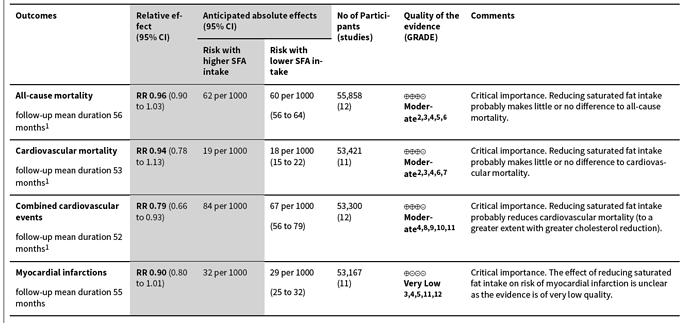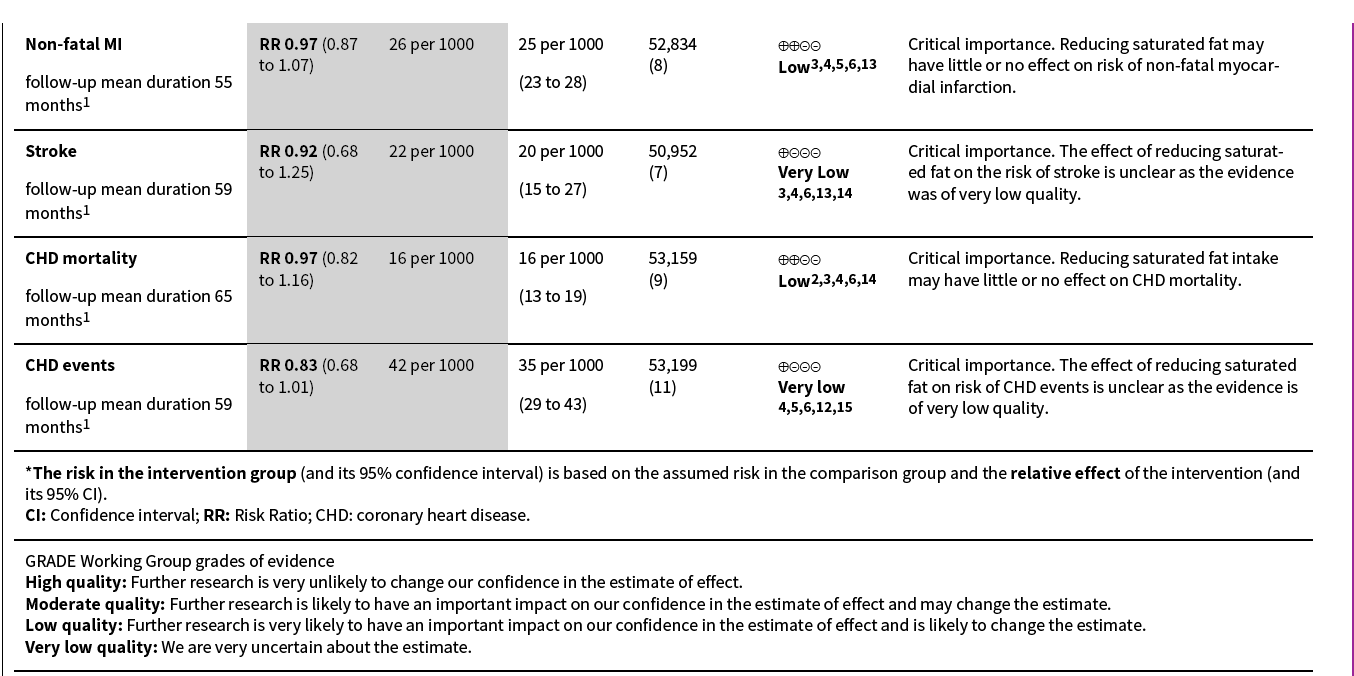Cochrane is apparently getting less objective, with some founding members claiming that the board has sold out. I’m surprised by the 21% reduction in events, however. First of all, it seems high, and second, how clinically relevant is this reduction? (It is quite possible for statistically significant results to be irrelevant from the clinical point of view.) I wonder what the selection criteria were for this metanalysis. Have you seen any critique by Zoë Harcombe or any of the other usual suspects?
Reduction in saturated fat intake for cardiovascular disease
I’m sure it’s possible to develop a foie gras liver by overeating or force feeding oneself on fat.
Although oddly it would seem that the geese and ducks need grains to achieve it…
I don’t see the “gavage” involving much ingested fat so maybe… just maybe… your sweeping statement was incorrect?
Increasing Vitamin C intake is also the best ‘strategy’ to increase and maintain the glycocalyx shield on the endothelium and not eat more of any fat than necessary meaning watch your portion size, and being your Vitamin K intake is adequate, your veins and arteries will be clean as a whistle?
No kind of fat is going to protect you from CVD or CHD risk, period!
Another one to add to the list of ‘strategies’ is to try to keep endogenous and dietary sugars as low as you can coupled by adequate Vitamin C intake?
Authors’ conclusions: The findings of this updated review suggest that reducing saturated fat intake for at least two years causes a potentially important reduction in combined cardiovascular events. Replacing the energy from saturated fat with polyunsaturated fat or carbohydrate appear to be useful strategies, while effects of replacement with monounsaturated fat are unclear. The reduction in combined cardiovascular events resulting from reducing saturated fat did not alter by study duration, sex or baseline level of cardiovascular risk, but greater reduction in saturated fat caused greater reductions in cardiovascular events. …More
I don’t see how they could have said all those things about not finding any evidence that supported lowered saturated fat intake improved health outcomes and then come to the conclusion that they did.
The number needed to treat for an additional beneficial outcome (NNTB) was 56 in primary prevention trials, so 56 people need to reduce their saturated fat intake for ~four years for one person to avoid experiencing a CVD event.
Give me a break…
We considered studies that performed experiments with C57BL/6 mice (non-knockout) with NAFLD induction by hypercaloric diet, and whose treatment was based on lipids. (oils)
https://www.ncbi.nlm.nih.gov/pmc/articles/PMC6949901/
Overfeeding on isolated fat…
Elevated PAI-1 is a risk factor for thrombosis and atherosclerosis[5]
https://en.wikipedia.org/wiki/Plasminogen_activator_inhibitor-1
Keogh at al53 recently demonstrated that 8 weeks of a
very-low-carbohydrate, high-saturated-fat weight-loss diet reduced plasma PAI-1 levels in severely obese individuals with
a body mass index of 33.64.1. However, the beneficial
effect of this diet seems rather to be a result of weight loss,
because plasma PAI-1 levels are also reduced by an isocaloric
high-carbohydrate, low-saturated-fat diet in the obese subjects. On the other hand, the effects of kDa on blood
fibrinolysis have not been examined in nonobese individuals
as far as we know. Our present findings suggest that the
nature of kDa with respect to the prevention of thrombosis is
a double-edged sword. The morning increase in PAI-1 plays
an established role in the mechanisms underlying transient
morning resistance to thrombolysis using tissue-type PA, as
the activity of PAI-1 is 2- to 4-fold higher in the morning than
in the evening.5 Therefore, the kDa-induced circadian augmentation of PAI-1 expression in a phase advanced manner
not only contributes to an increased risk of myocardial
infarction but also alters the efficiency of thrombolytic
therapy when applied in the morning.
https://www.ahajournals.org/doi/pdf/10.1161/ATVBAHA.109.190140
Oils not fat though… see it gets complicated this stuff…
I could feed you rancid seed oils and make you ill with ingested fats unlikely to make you fat though.
The fat we eat gets metabolised, if it’s not used structurally. (This is from studies involving radio-labelled foods.) The structural problems caused by eating too much polyunsaturated fat, especially trans-fats, are well-known.
Liver fat, on the other hand, is produced by a process called de novo lipogenesis, which occurs when the liver is overwhelmed with ethanol, fructose, branched-chain amino acids, or a fourth thing that I’m not recalling at the moment. Dr. Robert Lustig, the well-known neuroendocrinologist and food activist, explains the metabolic pathway involved during the course of this presentation (should you wish to do further reading, he supplies references to the studies he refers to on each slide):
I did say “overeat” and provided evidence.
Figure 1 (https://www.ncbi.nlm.nih.gov/pmc/articles/PMC6949901/)
Robert Lustig is right to an extent. Eat real food. However he doesn’t explain why modern humans are consuming all this junk food in the first place. Why this junk food was created in the first place.
Ah, I see. From what the article says of the studies they reviewed, all of the studies gave their mice high-sugar diets, which seems to be the standard practice in all these studies of “high-fat” diets in mice.
I fail to see how to disentangle the effect of the sugar from the effect of the high-PUFA oils the mice were given. Though we do know, come to think of it, that overloading the liver with trans-fats causes fatty liver, in the same way as does overloading the liver with ethanol, fructose, or branched-chain amino acids.
Because it’s cheap to manufacture, has a long shelf life and targets kids who get addicted to sugar and carry their addiction into adulthood.
Not sure what to say here…other than their conclusions seem misplaced:
The only location where they say sat fat might have an effect is for “combined cardiovascular events”. Otherwise, the data isn’t great.
Not sure what I should try…
What is your idea of pre-industrial junk food consumed by modern humans?
The obesity, CVD and T2D epidemics did not take off until the mid 20th century, coincident with the ramping up of the mega processed food conglomerates.
Thanks for providing this link. I would greatly welcome the chance to read the full paper, but for some reason (paywall?) I can’t seem to access it. Anyone else have luck without paying a fee?
Cottonseed oil and cheap industrially refined sugar came on the market in the U.S. in the mid-nineteenth century, and the diabetes epidemic began about twenty years later. Elliott Joslin watched it start, in fact, as cases began to come into Massachusetts General.
Here are some talks by researchers, with citations from the literature:
Baking… cakes, cookies, etc… with tea, coffee, etc…
To me it seems like demand drives an industry and not the other way around. Sure refined foods(especially refined sugar) are addicting without a question but a person must lack self-awareness to not see how the food is affecting them. I did experiments with corn oil many years ago… a couple tablespoons a day for a couple weeks and started gaining fat on my stomach… as soon as I felt my stomach rolls… I stopped immediately and started running. Though; one benefit I noticed from the corn oil or Omega 6 fatty acids was the production of Prostacyclin in my heart when I went running. My heart vessels widening and pumping a lot of blood with ease but I still don’t eat seed oils to this day.
It works in both directions. The “need” for deodorant was manufactured, but now people demand the products, despite the fact that most people who bathe daily smell just fine. (Though it has been remarked that at no time has the human race ever become too smelly to reproduce.) The sugar industry hardly had to create any demand for its product, since a taste for it appears to be hard-wired into human beings. The “need” for vegetable oils and margarine was largely manufactured (and the American Heart Association certainly did its part to help), but the products became popular because they could be manufactured at a lower cost than butter and lard can be produced for. There are a host of factors involved in developing demand for a product, and sometimes the marketing works, sometimes it fails utterly (the midi-skirt fiasco of the 70’s or 80’s comes to mind in this connection).
An interesting correlation: as demand/use of sugar/seed oils increased, so did the demand/use for deodorants.
Anecdotal observation: since starting to eat keto, my BO has decreased to the point of virtual non-existence. When eating standard SAD, I couldn’t go for more than a couple of days before my BO got to the point of absolutely requiring thorough cleansing. Since keto, meh… Even a succession of hot, muggy days and lots of sweating don’t do anything to me.
Interestingly, though, if I have a couple of ethanol-enhanced beverages, BO quotient increases noticeably. Then decreases again within about 3-4 hours.




